
The Norwegian Division – 1/2

At just 22 years old, Sofie Graesholt Sjødal is already emerging as one of the rising stars of Norwegian bridge. In this article, she shares her journey through the Norwegian Division tournament, the challenges she faced, her successes, and the strategic decisions that make all the difference in key moments.
The Norwegian Division is split into four groups, with more and more teams the further you go down. There is one First Division group with twelve teams and three Second Division groups with twelve teams. Both the first and second divisions play with the same cards at the same time, so we can compare. The tournament is played over two weekends, the first one being on 15-17 November. The second weekend will be in early February.
The person I was supposed to play with was invited to play the Champions’ Cup, so I got a new partner about two months before the event, and because of the World Bridge Games, we didn’t have that much time to practise. Luckily, it was the father of one of my junior partners, so with a common partner we had a foundation to build on.
An unexpected start
The first match was on Friday evening and we started the tournament by sitting the wrong direction. It turned out to be a great thing for us. (Note that I would not advise it even if we got a good score.) Since I used to be a tournament director in this event before I qualified for it, I know all the staff very well, and believe me when I tell you that they didn’t let me forget it. Anyway, why was it such a good idea for us to sit the wrong direction? Well, an alert TD caught it early, so our team-mates managed to play the board the wrong direction as well so that we could compare the results, and my partner made a nice decision on the hand:
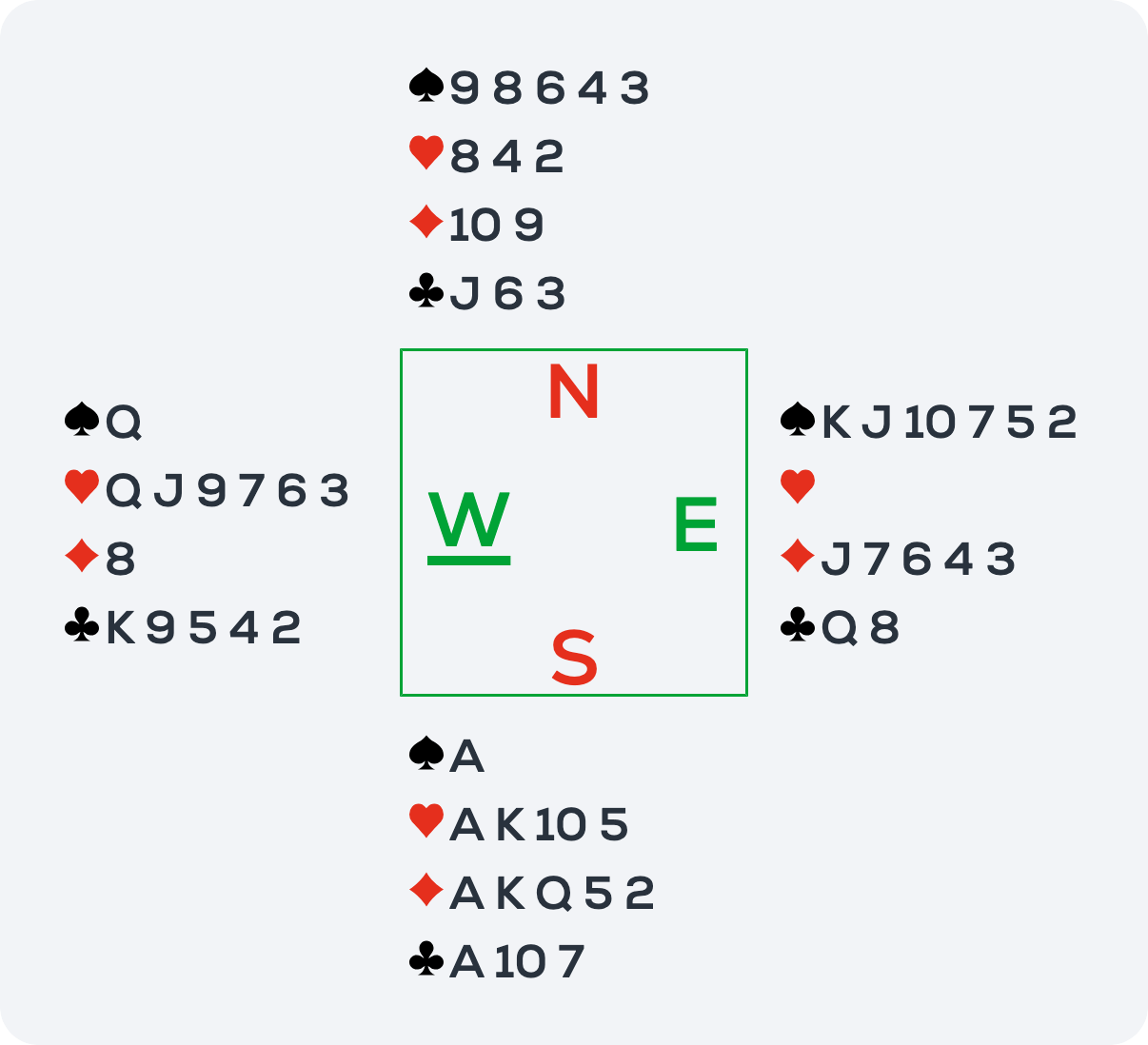

*2♥ = 8-11, 6♥
West led a club to East’s queen and declarer’s ace. He now played a diamond to the ten and East’s jack, and he played another club back. Now my partner had nine top tricks, with one in spades, two in hearts, four in diamonds and two in clubs, just made. At the other table our team-mates opened 3♥ and South decided to jump to 5♦. This was an impossible contract to make, and 14 IMPs to the good guys. A perfect start!
What do you do when you see that you have ended up in the wrong contract? In this board 4♥ looks like a very good contract, but you end up in 3NT. Do you focus on how to play in 4♥ and how that would be so much better? Or do you manage to stay on task and focus on how to play the contract you are actually in?
Overcoming obstacles: playing 3NT despite a tough hand
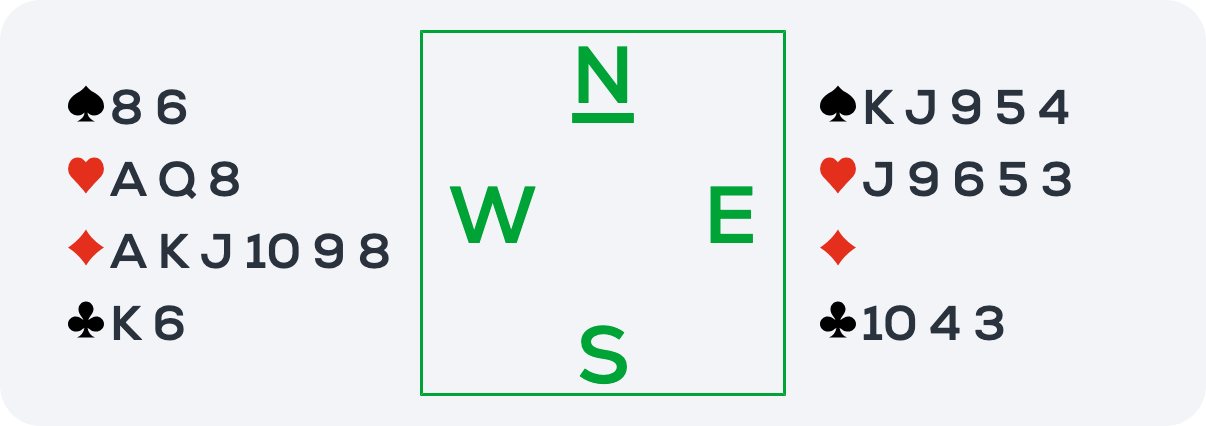
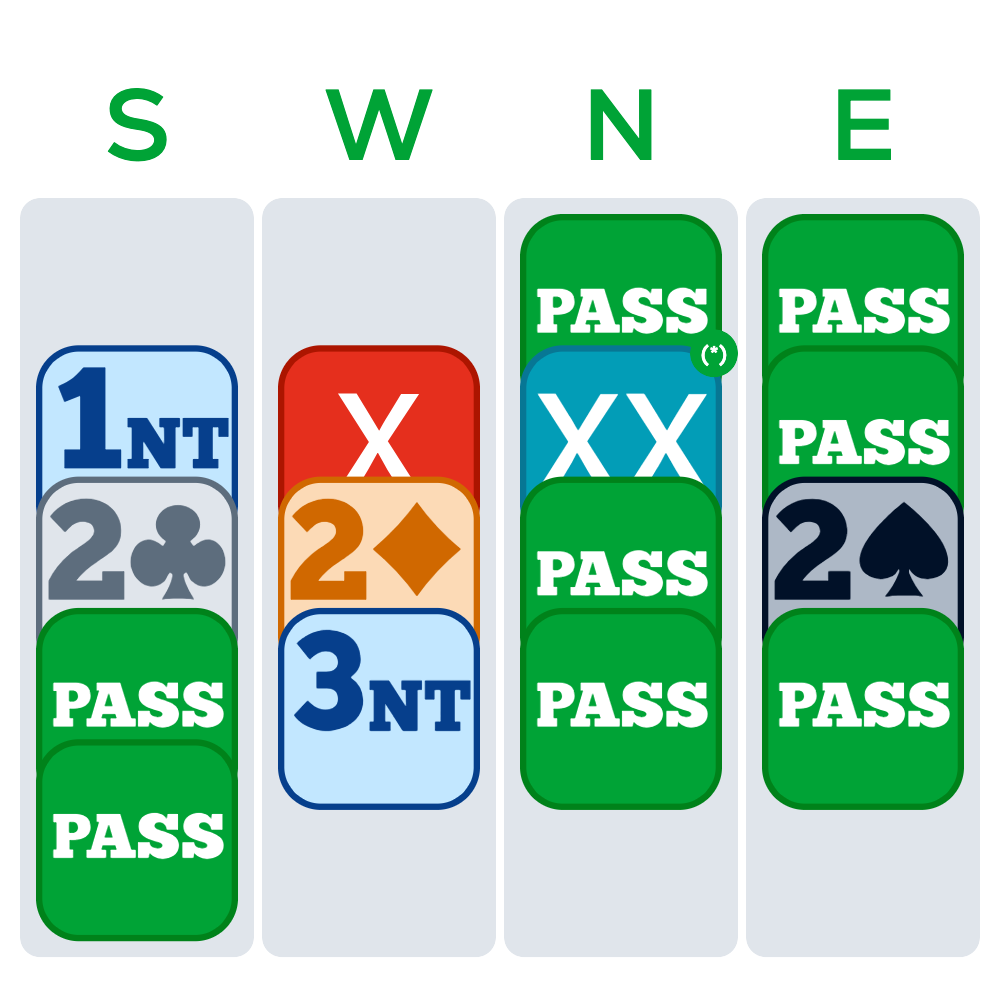
Rdbl = one long suit
Partner was afraid that you had a long and running diamond suit and no fit in any of the majors, and decided to let you play in 3NT, so now it’s your turn to make it. You get the lead of the queen of clubs to the ace and another club. First of all, let’s count the tricks. We can see that even if the diamonds break, we only have eight tricks, so if the opponents get in to cash their club tricks, we will go down. However, if we count the opponents’ points, we see that North has QJ of clubs from the lead, so that makes 3, and we only miss 18 in total. And since 1NT was 15-17, South is likely to have the rest of the points. Let’s be positive and assume that the clubs break 6-2, so that they will not be able to cash out.
You start by cashing AK of diamonds, hoping that the queen will drop, but no luck there. It now looks like we will have two losers in spades, one in hearts, one in diamonds and one in clubs, which makes five and one too many. Our best chance of making the contract looks like an end play.
You play another diamond that South ducks, and you see that it breaks 5-2, which means that South will have a safe diamond exit when he gets in. The good news is that he probably wouldn’t have ducked if he had another club because he would likely be eager to beat the contract straight away. You play another diamond to the queen and unsurprisingly you get the last diamond back, he is not interested in solving our suits. You now decide to cash your queen of hearts before taking your last diamond to make sure that you are not squeezing yourself in dummy. South can’t take the queen since that would give us an entry to dummy and we would be able to cash our heart tricks, so he ducks.
You are left with:
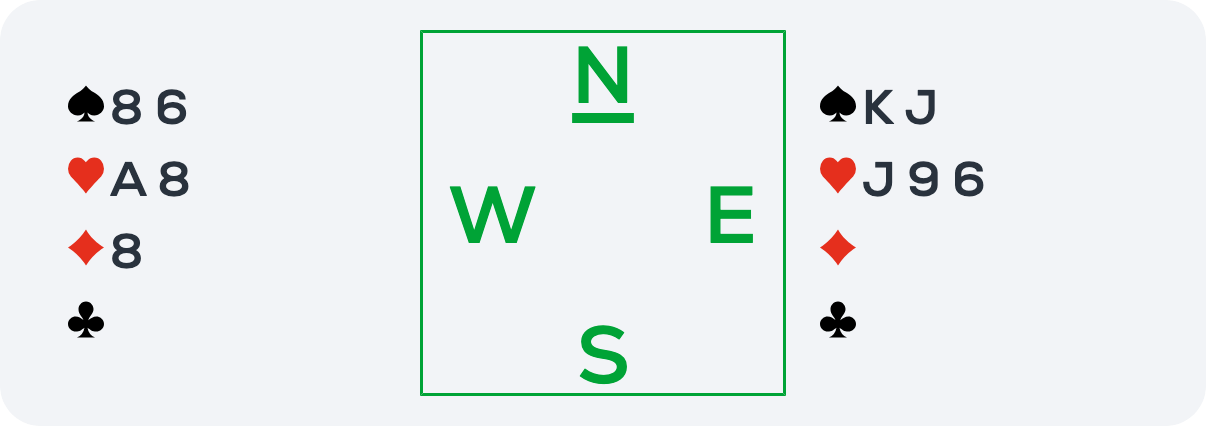
Now you cash your ace of hearts to see the heart distribution, and you see that it is 3-2 and South only has the king left. So, you cash your last diamond and discard a heart in dummy. If South discards his king of hearts, you take your heart trick as your ninth and if he discards a spade, you play the last heart, and he has to play a spade from AQ.
This was the full deal:

However, you already knew that right? Since we were able to place all the high cards straight away and quite quickly understood that the clubs had to break 6-2, the diamonds 2-5 and the hearts 2-3. Bridge is much easier when we have a lot of information from the bidding and defence.
Instinct at the table: when thoughts prevails over conventions
After a good first match we went to bed being at the top of the table, not a bad start. Unfortunately, things did not go so well on the second day, and we had a very tough day where few things worked out. But there was a nice board where my feeling at the table affected what I decided to do, and it worked out. We were playing with screens, so I could only see North in this match.
It was all vulnerable and my hand was:
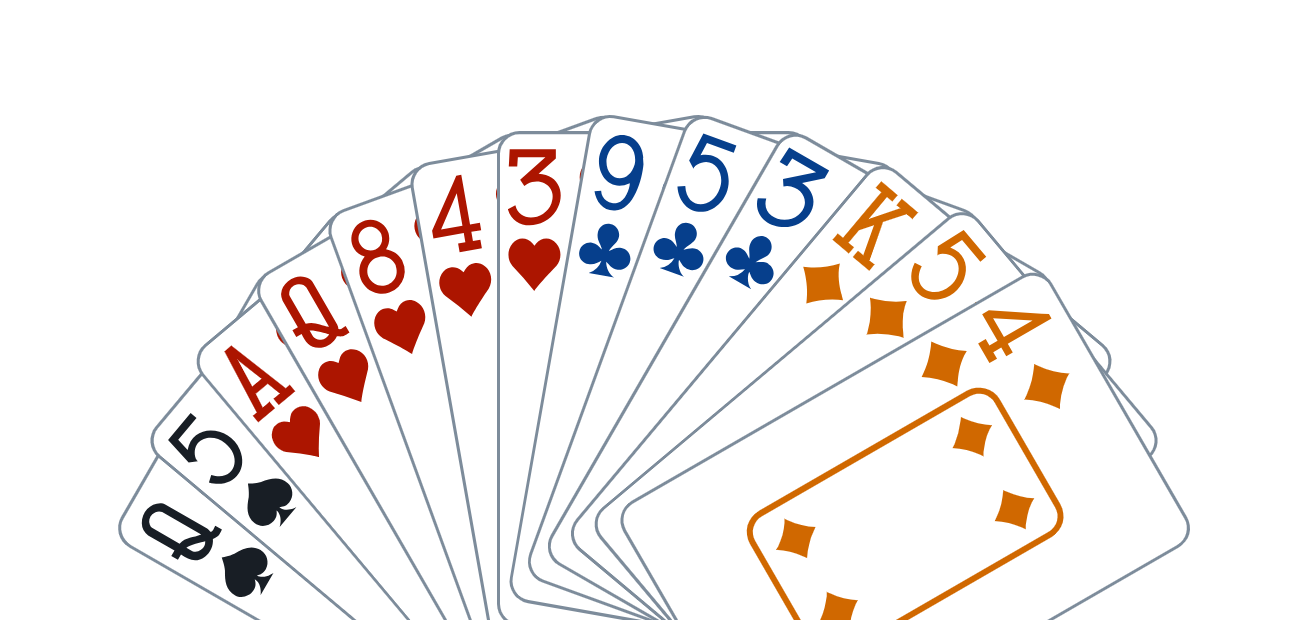
Partner opened 1♠ and North thought for a bit before she passed, not very long, but it seemed like she really wanted to bid something. What, I didn’t know yet. We play 2/1 as game forcing, so I was not strong enough for 2♥ and bid 1NT. Partner bid a natural 2♣ and I bid 2NT, which he raised to 3NT.
Here are my and dummy’s hands:
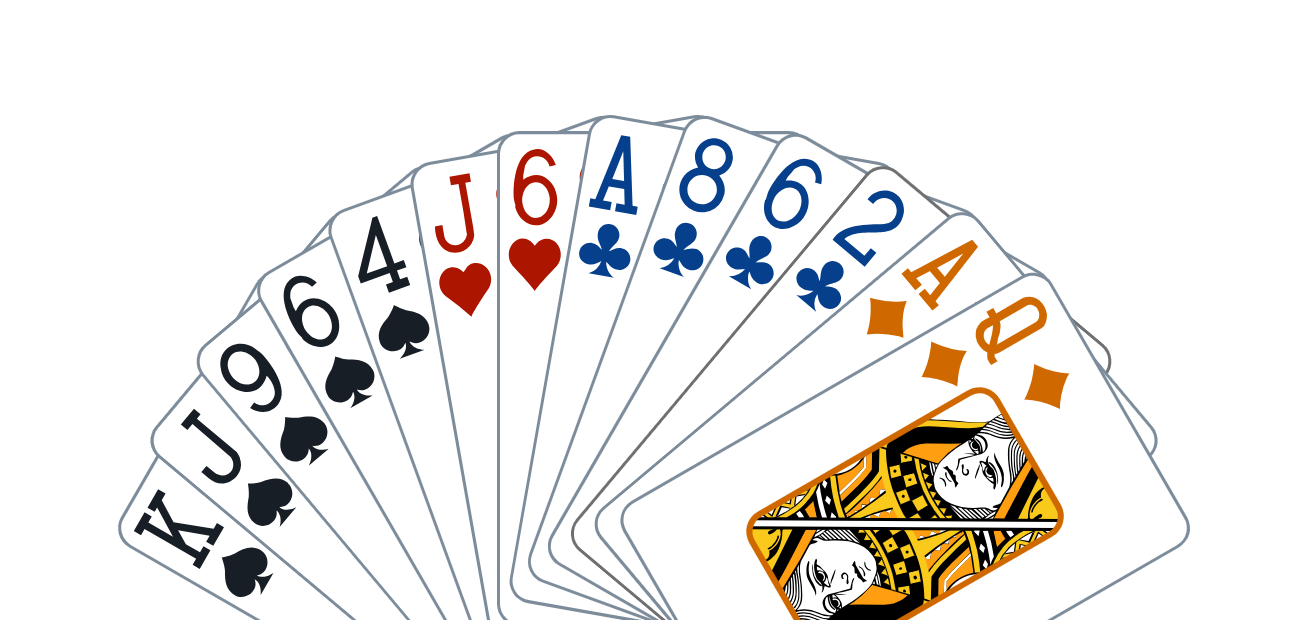
I got a small heart lead to the jack which held the trick, with the nine dropping from North. I counted my tricks and saw that if the spades broke I would have no problem, so I was trying to find a solution for the hand where the spades did not break and was hoping for a friendly heart break with 10 9 in North. I played another heart and when North showed out, I took my ace and played the queen of spades, which South won with the ace. He did not want to cash his king of hearts since that would make my queen good, and as partner discouraged in diamonds, he tried a club, which I ducked to her ten and she played the king back with her partner discarding a heart, so I knew that she had KQJT4 in clubs.
I ducked another club so that I could see more of South’s hand from what he discarded. She played another high club, and he discarded another heart. If I could solve the spades, I would have enough tricks. However, I could not afford to give away a spade trick because North would have a club to cash and South would have a heart to cash and together with a spade, that would make five tricks.
At this point I remembered that North thought a bit about the 1♠ opening. She had neither the ace of spades nor the king of hearts, so she would have at most seven points. Since she only had five clubs, I did not think that she was considering 3♣ in vulnerable, and 2♣ would be way too aggressive, even with a good suit. So, I figured that she had to be 5-5 in the minors and was considering 2NT to show both minors, but I decided that she wasn’t strong enough or her diamond suit wasn’t good enough. However, the break was not that long, so she could have just been distracted, and it looks stupid if she had 10x or 10xx of spades all the time. I wanted to finesse it, which is not the normal play. Should I go for the normal play or trust my instinct?
We were already having a bad match, so I figured that another bad board would not cost too much, but a good score could help us get more VPs than we would lose for a bad board. So, I decided to follow my instinct and finesse the spades. However, I had a small problem as I did no longer have a lot of communications. This meant that I had to play the queen of diamonds and overtake it with my king to play a spade to KJ96 and when South played low, I played the nine which held and just made, giving away the last club trick.
If I had just started with a spade straight away and got a club switch here as well, I could duck it twice and have a full count of the hand, making the board easier and also giving me ten tricks. Luckily, it was IMPs, so the overtricks didn’t matter much and I made the contract. At the other table they played the spades from the top, going one down and 12 IMPs to us. Unfortunately, that was one of our few good boards on that day.
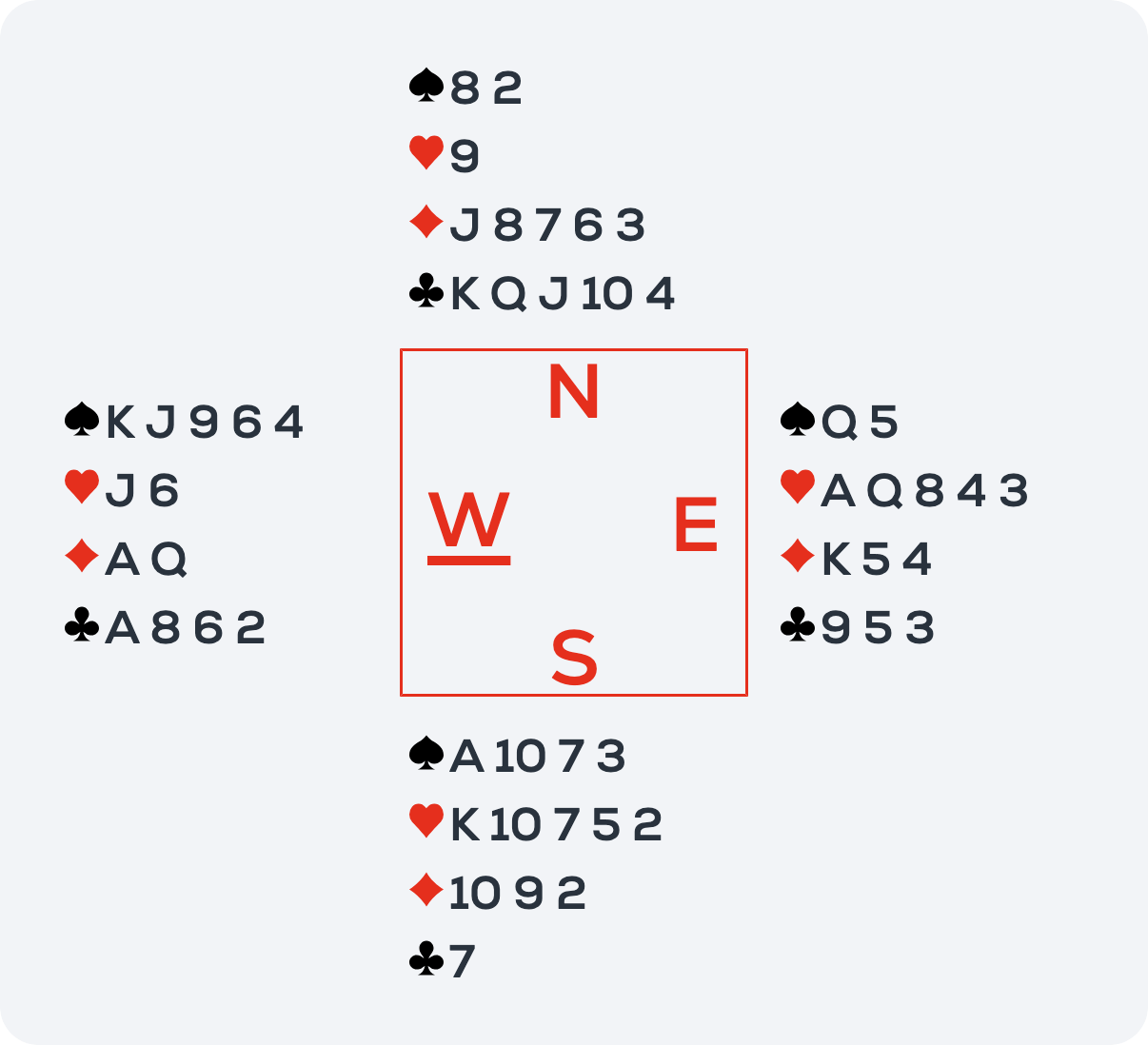
A weekend of challenges: when changing partners saves the day
About halfway through on Saturday one of our team-mates got ill and had to go home, and by Sunday morning it was clear that he would not be able to come back, so we had to continue without him. After the first half of the morning match, nothing was working for our team and we needed to do something. We felt very bad for the partner of the sick player who had travelled a long way and got to play few boards, and since nothing was working, it was time to shake things up, so I got a new partner. It sounds risky, we had about five minutes to agree on a system and decided to play Norwegian standard and make it easy for partner. It worked out great and we had an amazing set, coming back from a horrible first set to win the match.
We ended the weekend playing half a set from the sixth match, which we will finish in February. After a great start, it was not a good weekend and we need to improve on the second weekend to make sure that we don’t get relegated. Luckily, our group is quite close and we are only halfway through, so there is no reason to give up.
Did you like Sofie’s article?
Share your opinion in the Comments section below.



